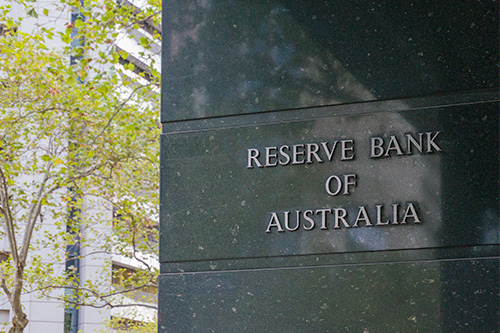
The Reserve Bank of Australia has increased the cash rate by 25bps to 3.35% in February, in line with expectations of the economists from the big banks.
Here are the highlights of RBA Governor Philip Lowe’s monetary policy statement:
On inflation:
- Global inflation remains high but is moderating in response to lower energy prices, the resolution of supply-chain problems, and the tightening of monetary policy.
- Inflation in Australia is expected to decline this year due to both global factors and slower growth in domestic demand.
- CPI Inflation is likely to hit 4.75% this year to around 3% by mid-2025.
On the economy:
- The Australian economy grew strongly over 2022.
- The forecast is for GDP growth to slow around 1.5% over 2023 and 2024.
On the labour market:
- The unemployment rate has been steady at around 3.5% over recent months, the lowest rate since 1974.
- Job vacancies and ads remained at very high levels despite slight declines recently.
- The forecast for unemployment rate is to increase to 3.75% by the end of this year and 4.5% by mid-2025.
- Wages growth is continuing to pick up from the low rates.
On the fate of the cash rate:
- The RBA’s priority is to pull inflation back to its target of around 2% to 3% while keeping the economy on an “even keel”.
- Further increases in interest rates will be needed “over the months ahead” to ensure that inflation returns to target.
- The RBA will be monitoring developments in the global economy, trends in household spending and the outlook for inflation and the labour market.
- The RBA remains “resolute in its determination” to meet its inflation target and will do “what is necessary” to achieve the target.
CreditorWatch chief economist Anneke Thompson said this marks the ninth hike by the RBA since it started its monetary policy tightening in May 2022.
“While there are early signs that consumers are now starting to reduce spending, and businesses are far less optimistic about the year ahead compared to 2022, the RBA clearly wants to see some sustained evidence of a cooling economy before pausing any further cash rate increases,” she said.
Ms Thompson said the RBA’s next move in March will depend on January’s retail trade showing.
Figures from the ABS showed a 3.9% decline in retail sales to $34.472bn in December. This was on the back of the inflation during the last quarter of the year hitting 1.9% quarterly and 7.8% annually.
“A fall in total sales was to be expected given that Black Saturday sales now make November the peak sales month, therefore January sales will be closely watched,” Ms Thompson said.
“Inflation also appears to be moderating, and we should see further drops in the rate of price growth as data is now being measured off 2022 figures, when price rises had already kicked in.”
Ms Thompson remarked that the RBA’s efforts to slow the economy and cool the inflation appear to be already working.
“How quickly and deeply this ‘cooling’ is felt by businesses will be key to determining what happens next to the cash rate,” she said.
Be careful about cashback offers
Rate Money CEO Ryan Gair said the cash rate hikes would likely entice borrowers to refinance and take cashback offers by lenders, something he warned borrowers to be careful about.
“Cashback promotions the banks are offering are doing more harm than good — with inflation jumping to a record-high, we need to curb it by getting consumers to reduce spending,” he said.
“History has shown that when consumers are given cash bonuses, a huge proportion will spend it rather than saving or putting it towards paying down debt.”
Mr Gair urged borrowers to use the cashback wisely or choose a home loan product that will actually beneficial in the longer-term.
“Within the mortgage industry, we want to see consumers choose the best product for their long-term financial health not see them get a quick buck in the short term,” he said.
Collections: Mortgage News Interest Rates

 Fact checked
Fact checked

Share